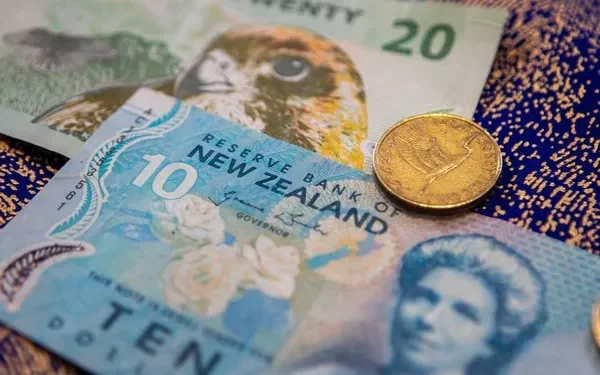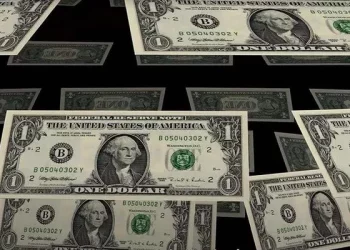The study of basic knowledge of foreign exchange cannot be done without books. There are a lot of foreign exchange books available for study. For investors who want to learn basic knowledge of foreign exchange, it is very necessary to choose basic and important books among them.
Here we take a look at must-read books for beginners in foreign exchange.
Everyone wants to hear the wisdom of legendary traders, and fortunately, the stories of most of them are fully preserved in books.
These trading books contain the wisdom of years of experience.
Even if you don’t understand everything you read as you read, the thoughts will take root in your subconscious and over time they will grow and blossom.
But reading is just the beginning.
Books can show you the way, but they can’t take you to the destination.
The best way to get there is to do it.
Today, some of the books we’re going to look at are unconventional choices that are not directly related to trading.
That’s because a deal isn’t just a deal.
It’s about thinking, about taking risks.
It doesn’t matter what order it’s in, you can read it as you please.
1. Peter Lynch’s Successful Investing By Peter Lynch This classic book is one of the first books on trading.
It’s dated in some ways, but still brilliant in others.
If you are a long-term trader, this book is a great inspiration.
Most people tend to think that the best traders are mathematical geniuses, but this is not always the case.
A large number of the top market killers come from a wide variety of backgrounds.
They suck at math and rely more on intuition.
They tend to try a lot of things and have twists and turns in their early careers but are willing to learn.
This makes them crossover thinkers.
They see things that other people don’t, and that’s the key to success.
Lynch was an ordinary liberal arts student before running one of the most successful funds in history.
He’s good at finding high-growth stocks before anyone else does.
The market has changed a lot since he started trading.
He hates computers.
But no one trades without a computer in today’s market.
Many of your current opponents on the battlefield are computers.
There are also more professionals in the market than ever before, which means we’re up against smarter competition.
But much of his common sense is as relevant today as it was in the early 1980s.
Above all, Lynch focuses on using what you know to make decisions.
He developed a strong sense of curiosity and attention to the world around him.
If his wife or child comes home with a brand new shopping bag, he wants to know something about it.
If he finds some shops in his area, he begins to study the significance of their presence.
Information travels so much faster these days that it may seem hard to find a store that investors have never heard of, but it’s not impossible.
Many struggle to see the future.
Unless something is already popular, they can’t imagine it taking off like a rocket.
But if you want to find high-growth stocks, you have to develop a deep desire to see what the future holds and discover it before anyone else does.
This may sound confusing, but after you read the book, you will understand.
Technical Analysis and Stock Market Profit Forecasting by Richard Schabeck This book is a classic that tells you how to draw beautiful lines on charts.
It is also the only technical analysis book recommended by professional trader Peter Brandt.
There are a few things to note about this book.
The first is that there’s no e-book version, but it’s still worth a place in your trading toolbox, even if it’s a little more expensive.
If you can’t pay $50 up front for a book, there’s no reason to make thousands of dollars in the market.
The second thing you’ll notice is that the book is very old.
It was published in 1932 and a second edition in 1937.
You’re probably already wondering, will this still be true 80 years from now?
It is hard to believe that it still makes sense in today’s sophisticated computer-led trading markets.
But the more things change, the more they stay the same.
Even in the 19th century, the best traders often looked back at past markets because they regularly went through cycles over and over again.
This book is specifically about cryptocurrencies.
The savvy reader will notice the publication date immediately.
On October 24, 1929, Black Thursday, the stock market experienced the biggest crash in history, beginning a four-day bloodbath in which the stock market lost $30 billion, the equivalent of $400 billion in today’s money, a total that exceeded the losses of World War I.
When people say the crypto market is crazy, they don’t understand the meaning behind it.
Studying stock market volatility during the really crazy crash and subsequent Great Depression is a study of real volatility, and it looks an awful lot like the crazy highs and lows of today’s crypto market.
3. 100 Times Super Strength Stocks: How I Made $6.8 Million from the Stock Market in 28 Months for $48,000 by Jesse C.
Rarely seen outside the Sting currency market.
It’s a Bible that almost all investors must buy.
The most important parts of the book will give you insight into the psychology of the author, as well as his early successes and failures.
It covers the complete journey of a trader, from the crazy highs to the lowest lows, as outlined in our previous article, “What Legendary Traders Must Do.”
Before you get into a single K-chart, he talks about the mindset of a trader, how to deal with the mood swings of risk money in the chaotic storm of crazy markets.
But fear not, he draws a lot of K-diagrams in a few tight chapters, better than most long books on technical analysis.
He combines some basic and technical analysis to speculate about his strategy, and this shows in each carefully chosen example.
If you can learn these few chapters, you may never need another technical analysis book.
Finally, he also spends a lot of space explaining how to unwind those positions.
And selling is probably the most underrated skill in trading.
Trading is counterintuitive. It forces us to go against our natural instincts, ride them and become winners. Trading is not simply a matter of holding for the long term and selling much later.
This book will teach you to be a master trader.
In my opinion, successful traders must have read a lot of books and become the best through self-practice. Theory and practice complement each other, and theory cannot be compensated by practical experience, and vice versa.
Recommendation 1: Introduction and skills of Foreign exchange investment introduction and skills of foreign exchange investment focuses on the introduction of the basic knowledge of foreign exchange investment and related technical analysis skills.
Beginners learn the basic knowledge of foreign exchange, is bound to learn a lot from this book, in addition, this book also introduces a certain basic analysis of basic knowledge, which is of great help to our late foreign exchange speculation.
From loss to Profit From loss to profit is a book summarized by the author based on his own experience in foreign exchange and stock trading. This book is dedicated to explaining the actual combat report in the process of foreign exchange trading, and records the real story of the author’s trading.
Novices can certainly find their own trading shadows in this book, learn from them and correct them.
The detailed analysis of technical indicators focuses on a variety of technical indicators are the basis of market analysis, all investors trading must learn several technical analysis methods.
And this book will give you detailed learning materials.


























